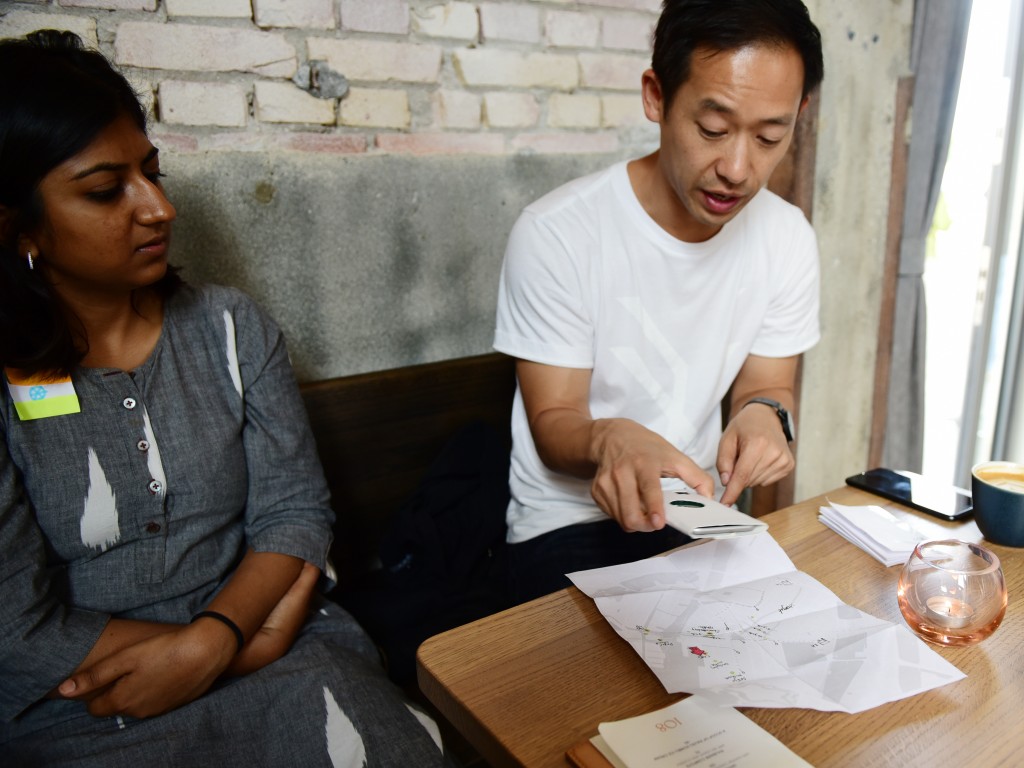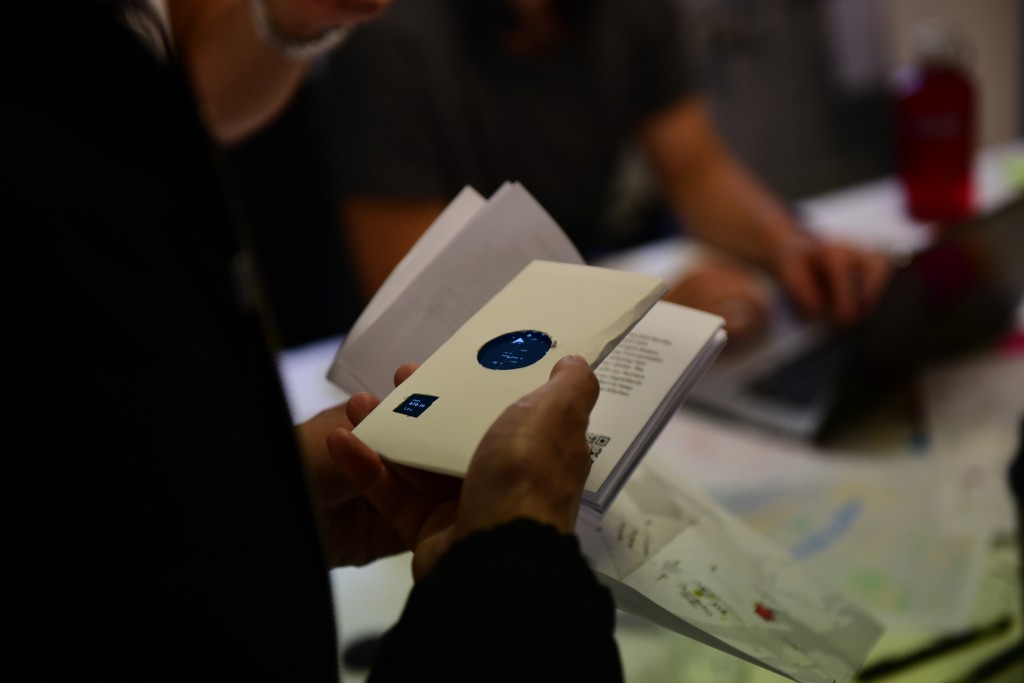Go Wander
Go Wander is a service that challenges the way we are travelling. By providing a personalized travel kit, the service allows people to discover cities without distractions of modern life.
Completed in 3 weeks at CIID together with Anoushka Garg, Benedict Hübener and Isak Frostå, supervised by the amazing Michael Peng (IDEO), Steven Bishop (IDEO), Simon Herzog (CIID Professional Programmes) and Daniel Letts (Design Council).
My role: research, experience prototyping, storytelling.
Link: CIID Website
The internet has changed the way we live, behave and communicate with each other. However, one thing that we don’t often think about is how the internet has changed the way we travel. The abundance of digital services, apps and platforms has created an invisible safety net of technology that cat get us from A to B as efficiently as possible, whenever we need that or not.
But is travelling really about making sure that you find the places with the most stars? And is it really about getting from A to B as fast as possible? We don’t think so.
It all starts with us getting to know you, your interests, and travel behaviours. Set your destination and travel dates, and let us take care of the rest. A few days later we will send you a package containing your very own travel kit. First of all the kit contains a map, a physical map, of the city or area you are visiting. This map is not your regular map, it has been created specifically for you, based on your profile. It also contains an electronic compass – the only digital interaction you will need during your trip. Choose a destination on your map and place the compass on it: the device will calibrate itself and point towards the new destination, giving you the direction and distance towards it. The way to get there however is completely up to you.
Go wander.
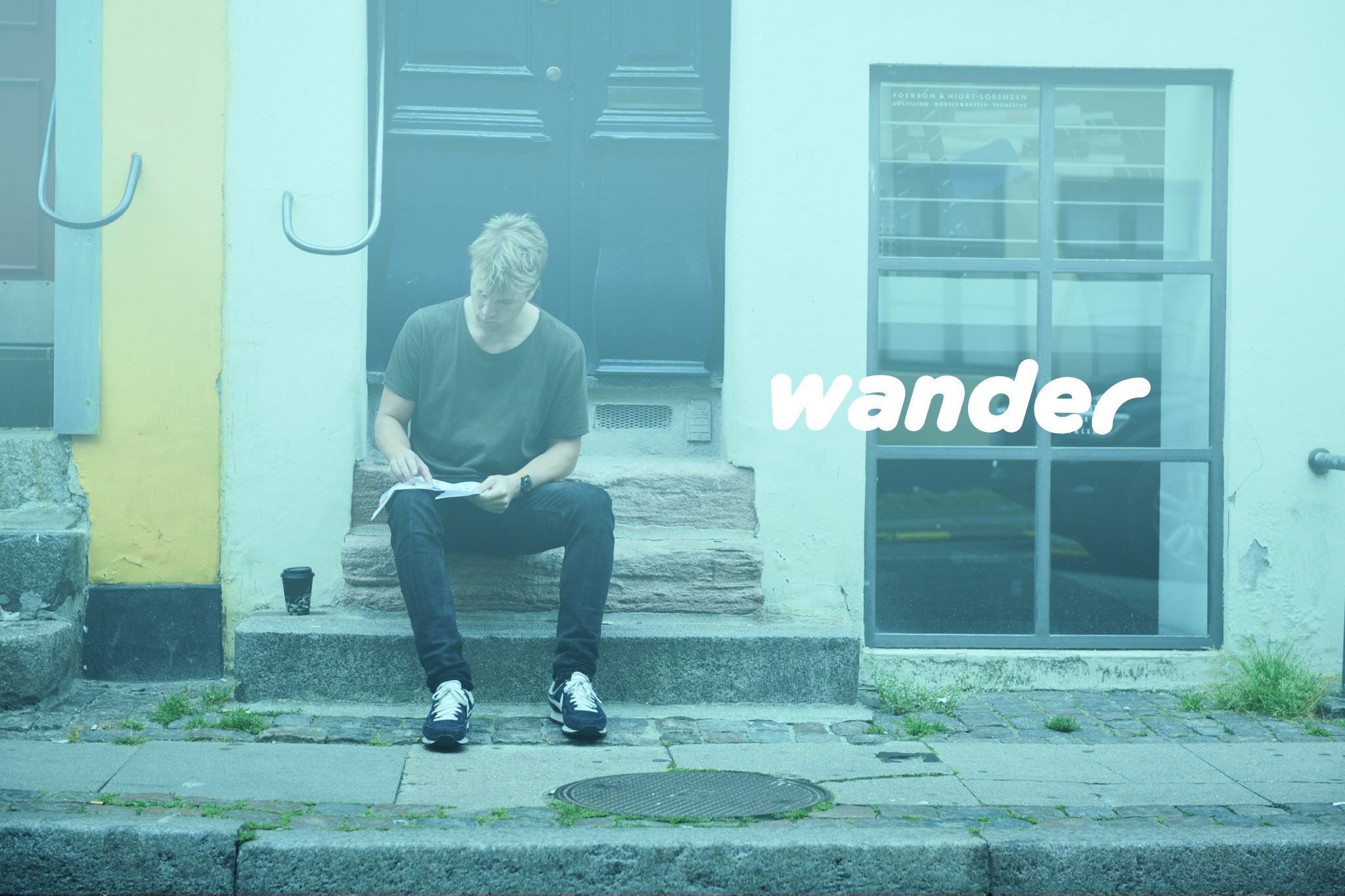
The brief
Mobility is one sector undergoing a massive transformation to services from traditional products. Autonomous cars, electric drive trains, and ride-sharing alone have turned car ownership on its head. Add to that innovations in biking, drones, smart cities, even teleconferencing and the larger possibilities for mobility are at once inspiring to designers and terrifying to transportation execs.
While all of these trends definitely affect inhabitants of modern cities, it will also change the way we travel in such contexts. What problems do current tourists face? What challenges may occur in the future? How does the future of mobility in urban environment look like for modern tourists?
The process
We set ourselves to understand the people who travel in different ways and modes, as well as the ones who directly work in the travel industry. We talked to the tourists who were wandering around Copenhagen, people, who worked at hostels, or ran their own travelling agencies. We also interviewed some of the expert travellers, who have visited places that were not popular destinations, who travelled long distances just on their own, or who are travelling around the world right now.
The insights
After the interviews, we have narrowed down three key insights that would lead our process later.
1. Efficiency is of low priority to tourists
We have observed that there was a disconnect between the preferred ways of travelling and the tools being used. Tourists seemed to value spontaneous moments and would not prioritize getting from A to B as quickly as possible. However, such digital tools as Google Maps are mainly focused on purely just that - the most efficient route for getting to the desired destination.
2. Curation kills authenticity
To add to thew first insight, most of the interviewees and emphasized that the most memorable moments from their trips came from the moments, when something unplanned happened. None of the interviewees had mentioned a planned or curated experience that have uncovered the authenticity of a subject.
3. Technology allows for spontaneity
While technology was capable of ruining the authentic and spontaneous parts of travel, it also created a safety net: people mentioned feeling secure having insurance that, when lost, they could rely on technology. Such feeling allowed people to not plan much in advance.
Prototyping
After some brainstorming, we have landed on a concept that would include having a compass and a personalized booklet of recommended locations. The first thing we wanted to prototype was people's reactions and behaviours when navigating the city only with a compass, which would only show the direction towards the desired destination.
The prototyping sessions gave us valuable feedback: people liked (some even preferred) not knowing where exactly they were headed to, and trying to find their own routes.
The concept
After several prototyping sessions, we have come up with a service concept.
1. Plan
It all starts with us getting to know you: what are you interests, travel behaviors? What places were you planning to visit? What are your dream destinations? What coffee you like? You set your preferences, click “Order”, and close your screen.
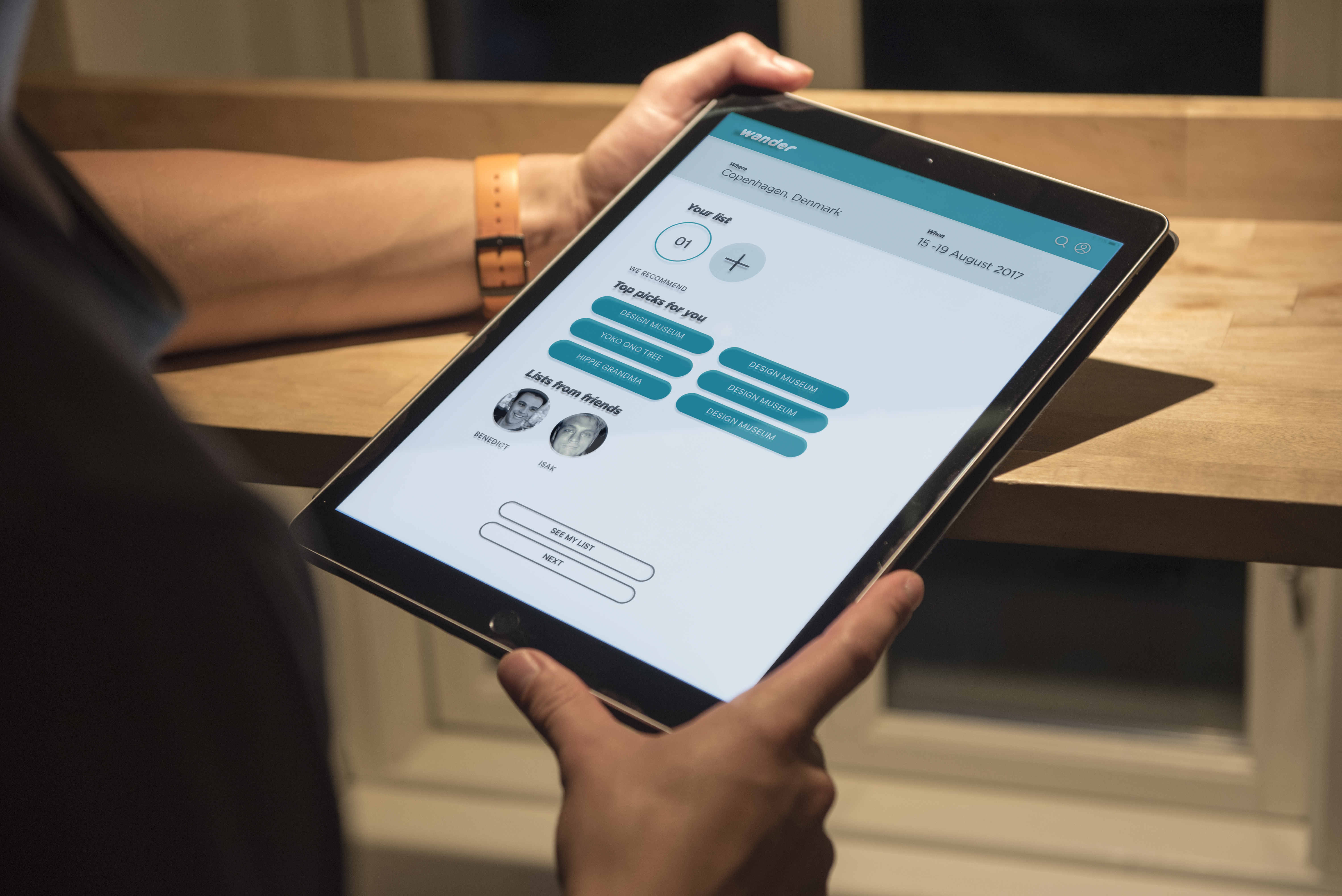
2. Receive
A few days later you receive a package that contains all that you will need to wander in a new place you’re visiting.
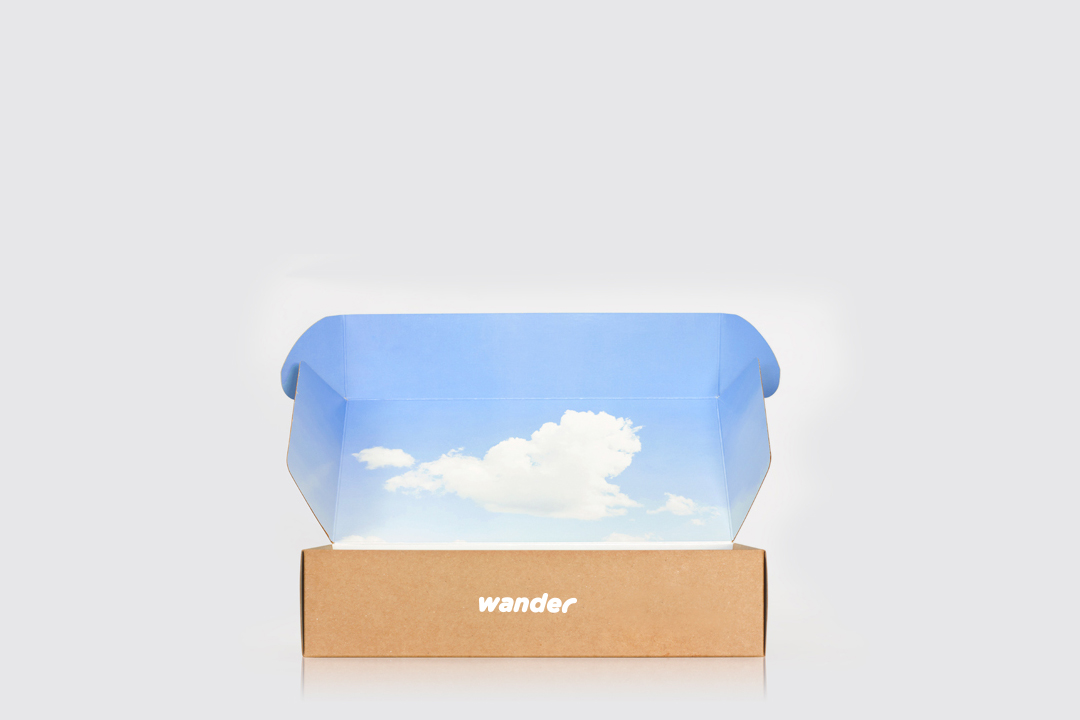
3. Prepare
You will get a paper map that is created just for you, together with a booklet containing all the places that have been curated in regards to your own preferences. We believe these places are the ones you will love. But you will not necessarily know how to get to them, right?
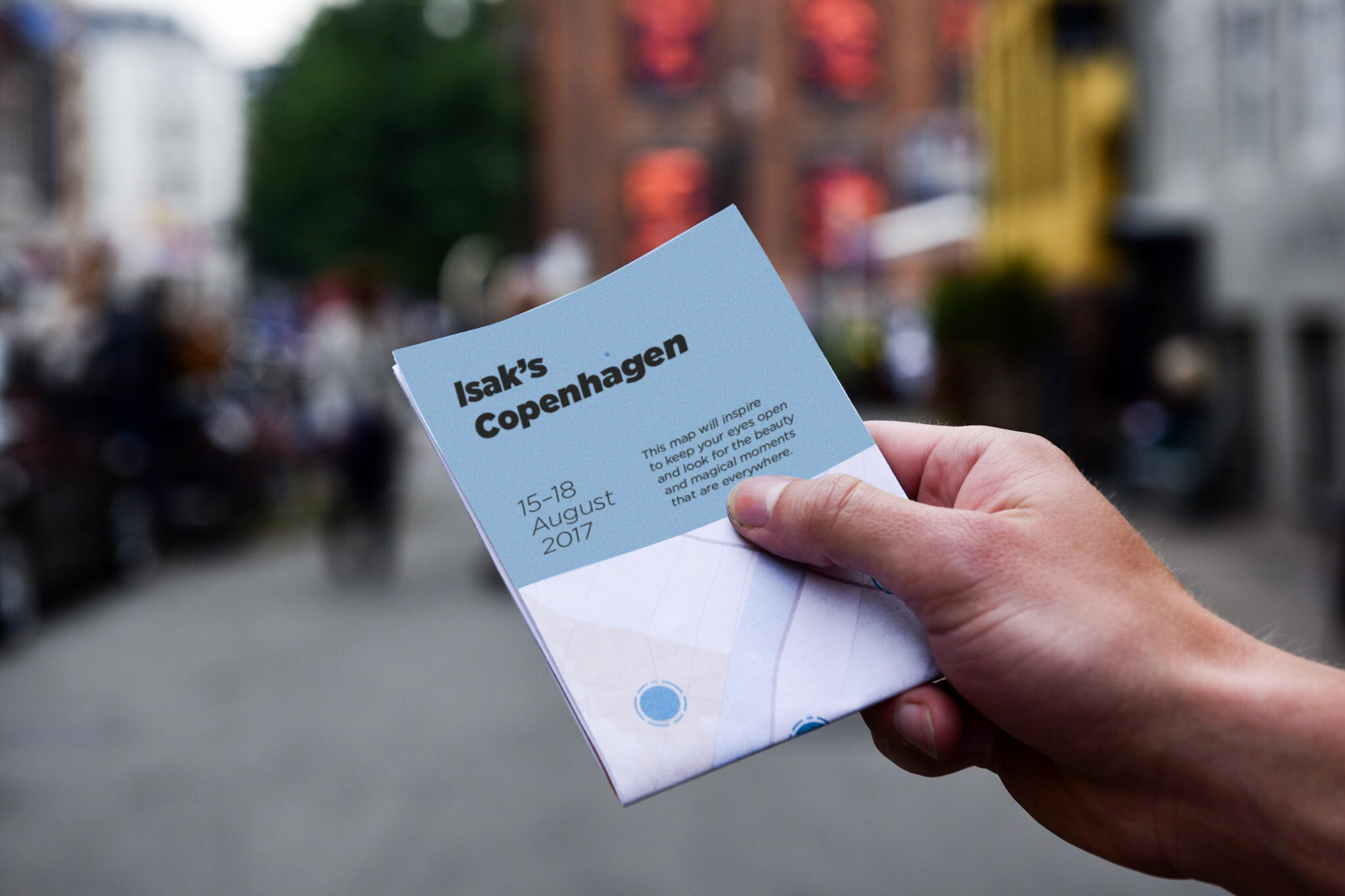
4. Set
That’s why we give you a compass. With it, you will be able to set your home location during the trip, as well as select a place you want to visit next – just place it on the map and the compass will automatically program itself to lead you towards your first experience.
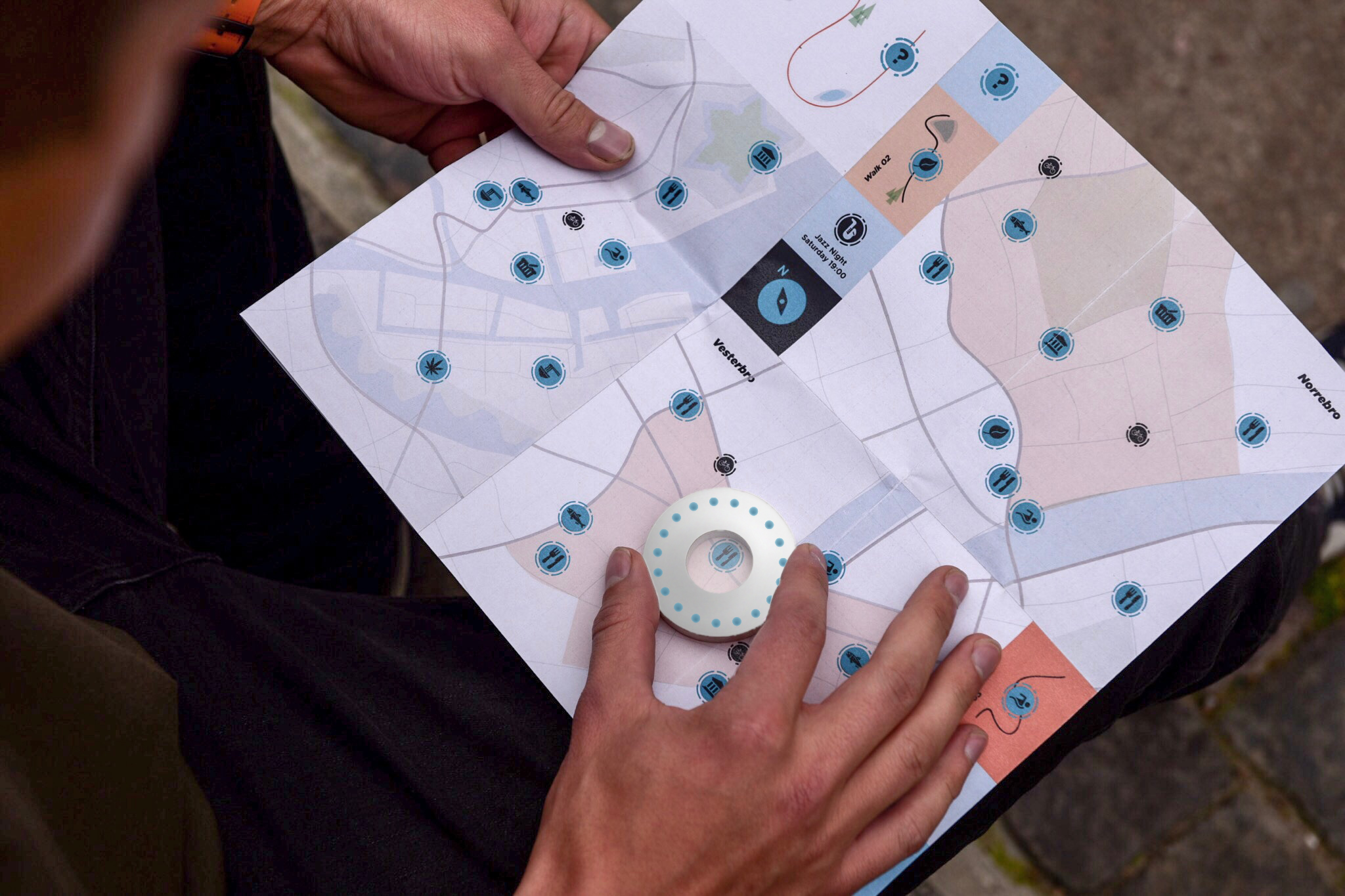
5. Align
This is the only core interaction with technology we want you to have during the trip: the device will point towards the end destination as well as give you feedback about the distance to it, but that is just about it.
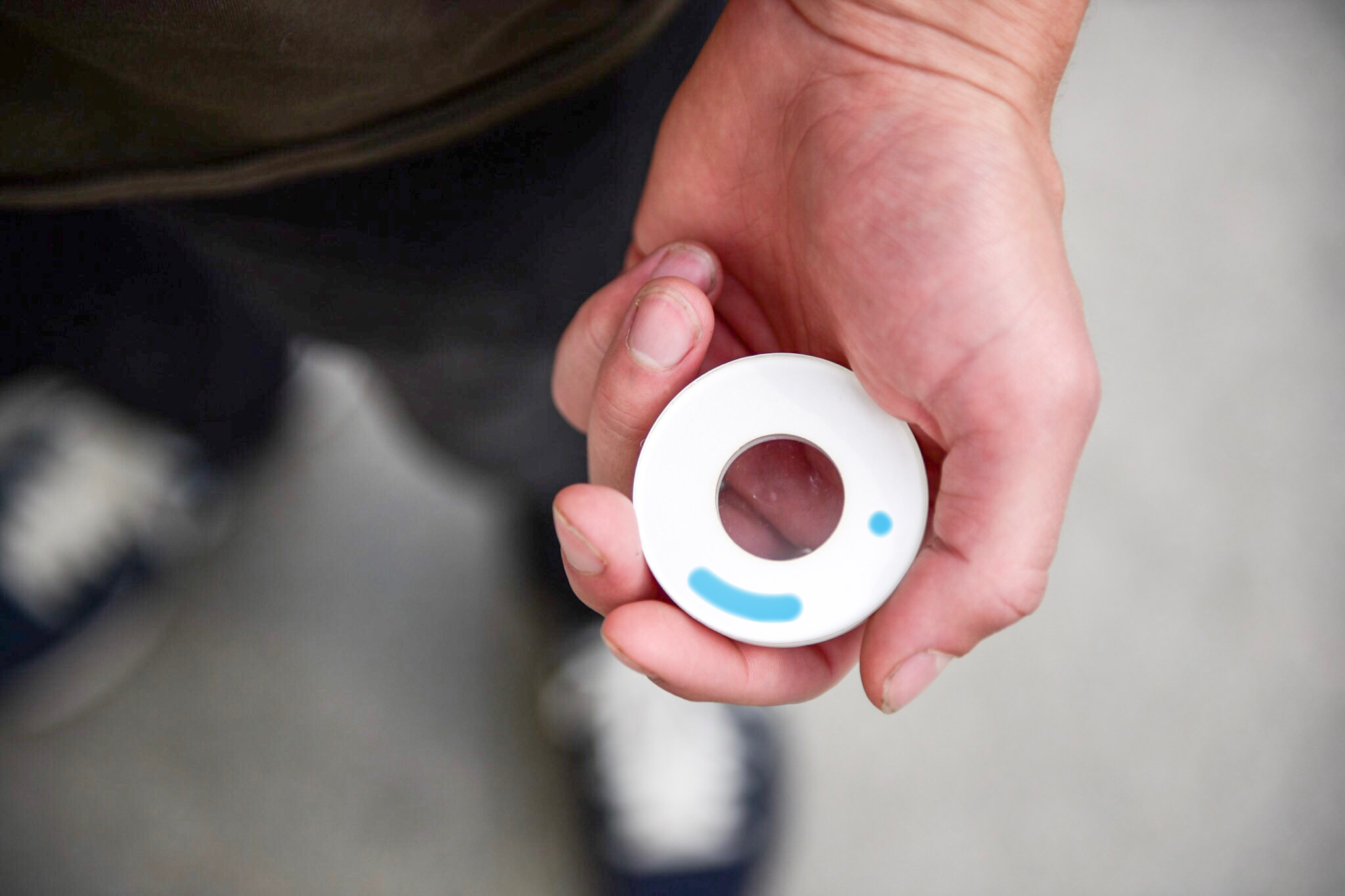
6. Wander
The way you get there is up to you. Start wandering.

The business model
Since we focus on enabling you to experience wandering as many unknown places as possible, our business model is also built around that. The first time you buy the package, you get both the compass and the map. Since the compass will work with any map, for the next destination you will only need to buy another personalised map.
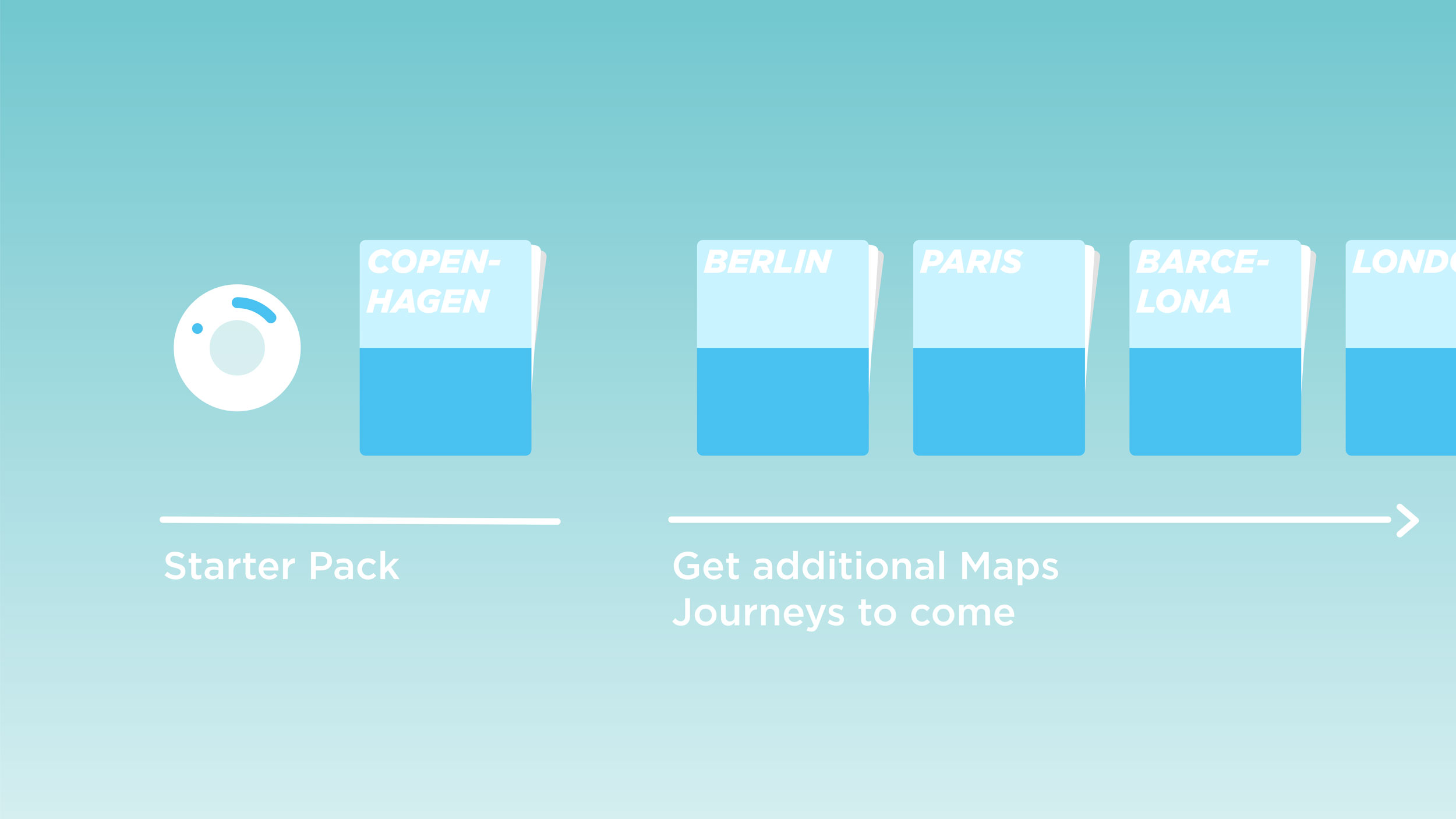
Learnings
One of the most unexpected learnings I have received was the realisation that good Product Design is good Service Design. Nowadays, no matter what kind of tangible or digital product one creates, it has to cover all the different channels that may connect/lead to such product - in the end, any product in a way is also a service.
Designing a service can also become a very abstract objective, where all the tools (Service Blueprint, Business Model Canvas, etc.) would create an illusion of certainty. Such frameworks are indeed helpful, but one cannot design for people just by filling in a questionnaire. In the end, I am extremely grateful for our mentors for pushing us to experiment, prototype and test all of the ideas with real people in real contexts.
